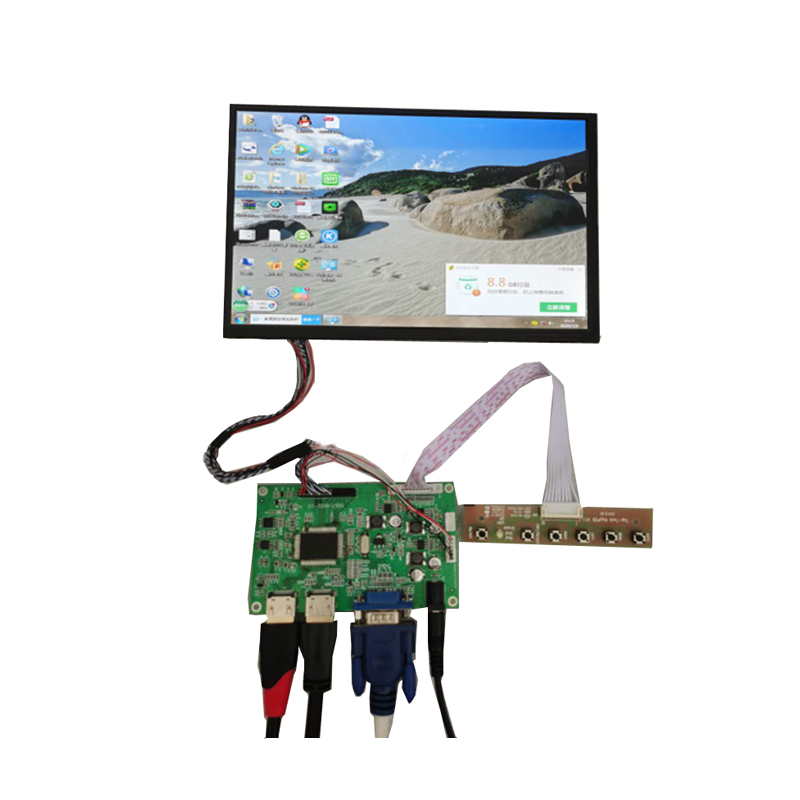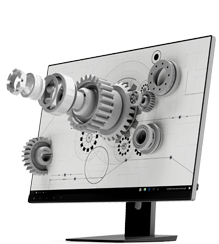Analyzing the slow decay journey of LCD screen backlight

From the first time a LCD screen is lit up, its internal backlight embarks on an irreversible and slow journey of "life decay". This process is not simply about "brightness" and "extinction", but a complex game of materials, heat, and time.
Analyzing the slow decay journey of LCD screen backlight
From the first time a LCD screen is lit up, its internal backlight embarks on an irreversible and slow journey of "life decay". This process is not simply about "brightness" and "extinction", but a complex game of materials, heat, and time. This article will take you to experience the process of the fading light and understand the science and impact behind it.
Introduction: An inevitable physical decay
We often believe that the lifespan of electronic products is' used until one day they suddenly break down '. But for the backlight of LCD screens, its end is more like the slow burning of a candle than the instant extinguishing of an electric light. This slow brightness decay and color temperature change is professionally referred to as "light decay". Understanding light decay is the key to understanding the long-term reliability of display devices.
1.Core principle: Why does backlight decay?
The root cause of backlight attenuation lies in the physical and chemical changes of its luminescent core - LED beads.
The light efficiency of LED chips themselves is reduced
Material defects: Under long-term current driving and high temperature environment, defects will occur in the lattice inside LED semiconductor materials. These defects will capture electrons, causing them to transition from "emitting light" to "generating heat", resulting in a gradual decrease in photoelectric conversion efficiency.
That's why the same current can no longer excite the same strong light.
Aging and denaturation of fluorescent powder
Mechanism of action: Common white LEDs are actually excited by blue LED chips that mix yellow fluorescent powder at the top to form white light.
Aging process: After long-term absorption of high-energy blue light, the chemical structure of fluorescent powder will gradually age and denature, and the conversion efficiency will also decrease.
Key impact: The aging rate of fluorescent powder is usually faster than the decay of the blue light chip itself. This leads to a relative increase in blue light components, and the mixed white light will gradually shift towards yellow, which is the fundamental reason for the "yellowing" phenomenon of the screen.
The Accelerating Effect of Heat: Heat is the Source of All Evil
The heat generated during backlight operation will rapidly accelerate the above two processes. Devices with poor heat dissipation design will exponentially increase the rate of backlight attenuation.
2. The Trilogy of Attenuation Process
The attenuation of backlight is not non-linear and uniform, but rather a process of gradual acceleration and symptom manifestation.
Phase 1: Silent Initial Attenuation (Initial Use~Thousands of Hours)
Performance: Almost imperceptible to the human eye. The brightness may have a slight decrease of 3% -5%, while the color remains accurate. Only through precision instruments can changes be measured.
Essence: This is the initial, slow adaptation period of LED materials and phosphors.
Phase 2: Mid term attenuation of symptoms (thousands of hours~nominal lifespan)
Performance
Decreased brightness perception: Users may feel that the screen is not as bright as before, especially in high ambient light.
The color is starting to warm up: the white is no longer as pure and begins to slightly turn yellow, especially when compared to a new device.
Initial loss of uniformity: Due to individual differences in lamp beads, slight brightness unevenness (dark corners) may begin to appear at the edges or center of the screen.
Essence: The aging of fluorescent powder intensifies, and the ratio of blue to yellow light begins to become imbalanced; Some LED beads enter the accelerated decay channel.
Phase 3: Late stage of severe decline (beyond nominal lifespan)
Performance
Serious lack of brightness: The screen is noticeably dim, and even if the brightness is set to 100%, it is difficult to see the content clearly.
Serious color distortion: The overall image is noticeably yellowish and reddish, with a significant reduction in color gamut, making it difficult to accurately reproduce colors.
Thoroughly disrupted uniformity: obvious dark spots, yellow spots, or light bar shadows appear (for side entry backlighting).
Essence: The large-scale failure of fluorescent powder has reduced the light efficiency of LED chips to an extremely low level. The backlight system is no longer able to meet basic display requirements.
3. A key concept: half-life
In the LED industry, its lifespan is usually referred to as "half-life". It does not refer to the time when the LED is damaged, but to the time required for its brightness to decay to 50% of its initial value.
For example, a LCD screen with a nominal lifespan of 30000 hours means that under standard testing conditions, its brightness will decrease to approximately half of its initial brightness after 30000 hours of use. This is an important design reference, but please note that in actual use, the actual lifespan often deviates from the nominal value due to differences in heat dissipation and driving current.
4.What factors are accelerating this decay?
High temperature: the deadliest killer. Poor heat dissipation of equipment and high ambient temperature can greatly accelerate material aging.
High brightness setting: Running at 100% maximum brightness for a long time means greater driving current and higher operating temperature.
Duration of use: Accumulated lighting time is the most basic unit of attenuation measurement.
Drive current: Exceeding the standard drive current (such as in some models that pursue high brightness) will sacrifice lifespan in exchange for brightness.
5. How to delay attenuation and respond correctly?
Preventive measures:
Good heat dissipation: Ensure that the ventilation holes of the equipment are not blocked and avoid prolonged use in high-temperature environments.
Reasonable brightness: Do not set it to the highest brightness for a long time while meeting the usage requirements. Enable automatic brightness adjustment function.
Response strategy:
For consumer grade devices (phones, monitors): When their brightness and color can no longer meet your requirements, it usually means the natural end of the product lifecycle, and considering replacement is a more economical choice.
For industrial grade equipment such as Tianma high brightness outdoor screens, backlight attenuation means the beginning of maintenance cycles. In the design phase, industrial grade modules with longer lifespan and better heat dissipation should be selected, and a plan for professional backlight replacement in the future should be planned, which is crucial for ensuring the continuous operation of critical applications.
Conclusion
The attenuation of LCD backlight is a slow and elegant farewell that has been predetermined since its inception. It is not a malfunction, but a natural material fatigue. Understanding this process not only enables us to make more rational decisions when the equipment is aging, but also guides us to make sufficient technical preparations and psychological expectations for the fading light that will eventually come at the beginning of product design and selection.
TFT LCD:https://www.idtdisplay.com/
AUO LCD Display:https://www.auo-lcd.com/products/auo-lcd-screen/










